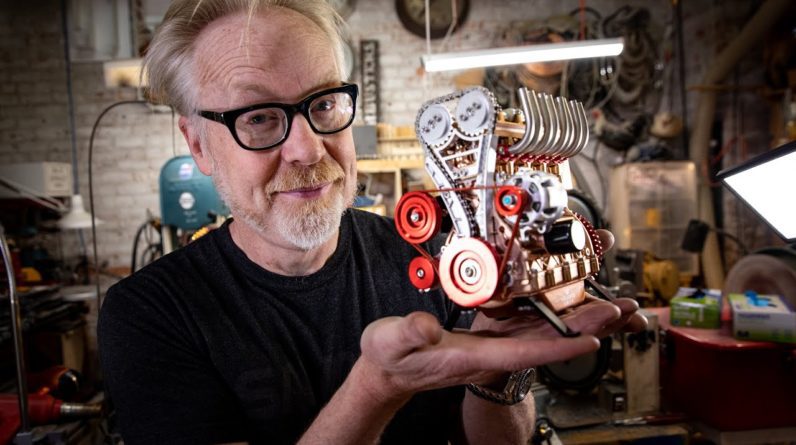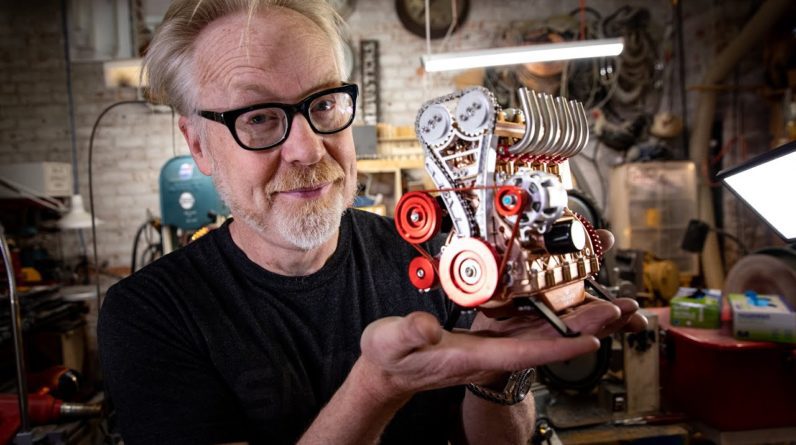This is a Top Fuel dragster, and everything
about this vehicle is designed for maximum acceleration, from its triangular shape to its specially formulated racing slicks to its 8,000-horsepower engine. It's all to help this
dragster hit 60 miles per hour in just eight-tenths of a second. But when it comes to production cars, automakers are still
racing to be the first to achieve a sub-two-second 0 to 60. So, why is it seemingly
impossible for a production car to go from 0 to 60 in under two seconds? Back in 2016, engineer
and YouTuber Jason Fenske tried to find the shortest
possible 0-to-60 time in a production car. Based on current technology, he calculated it would be 2.05 seconds. So, how did he get there? For acceleration, maximizing grip is more important than increasing power. All the power in the world is useless if it isn't being applied
to the pavement correctly. You need to have the maximum
amount of traction possible.
But just like a car needs as much traction as possible to take off, it also needs it to stop. To illustrate how quick
a car can decelerate, automakers use the distance
it takes a car to brake from 60 to 0 miles per hour. Since they both require maximum traction, you can use the formula
for braking distance to determine a car's best 0-to-60 time. For his calculations, Jason
used the current record for shortest braking distance, which is 90 feet. Plugging that into the
formula for braking distance along with 60 miles per
hour, or 88 feet per second, for initial velocity, you get an acceleration
of 43 feet per second. When you plug that into the formula for velocity and solve for time, you get 2.05 seconds. That means that according
to the laws of physics, the limit for 0 to 60 miles per hour in a production car is
right around two seconds.
The biggest reason for this limit is street-tire technology. Race cars and dragsters
use completely smooth tires with low air pressure for a reason. This gives the rubber as much contact with the pavement as
possible, increasing grip. Street tires have to sacrifice grip in order to be safe for public roads. They feature grooves that
reduce the amount of rubber in contact with the ground. These grooves are needed for wet roads because they provide a
channel for water to escape. Regular tires also need more air pressure, which also reduces grip but is necessary for
uneven pavement and bumps.

And unlike soft and
sticky Formula 1 tires, which need to be replaced after 50 miles, regular tires use a hard rubber compound that's less grippy but can
last up to 90,000 miles. But tire technology continues
to break boundaries. Much of this has to do with tire companies and automakers developing cars together. In 2018, the Dodge Demon
became the first production car to be released with
street-legal drag radials. Well, barely street legal. Dodge warned buyers not to use them in wet weather or on highways. But on the racetrack,
they allowed the Demon to reach 0 to 60 in just 2.3 seconds, the same time as a Model S.
This trend of automakers
and tire manufacturers developing technology
together has continued. Recent examples include
Pirelli and Porsche's Taycan, along with Michelin and Bugatti's Veyron. It could be exactly what's needed to raise the bar for how much grip production tires can achieve. Besides road-tire technology, drivetrains place a limit on acceleration. Gas-powered cars waste time with the number of moving parts it takes to get usable energy from a single engine. Fortunately, electric cars
opened new doors in this area, with motors that can send
torque to wheels instantly. In an EV like the Model S, which features a motor for each axle, electric torque vectoring can control how much power the front
and rear wheels receive.
A supercomputer inside
the car uses sensors that monitor the vehicle's behavior. This helps it determine
how to distribute torque between the wheels for maximum traction. And this can be changed
hundreds of times every second. But a new wave performance
EVs may be the answer to hitting the sub-two-second benchmark. Their drivetrains feature up to four different high-powered
motors, one at each wheel. The ability to control
each individual wheel makes this distribution
of power even faster and could be key to improving
grip on production cars. But even with the grippiest tires possible and the most advanced electric drivetrain, perfect road conditions
are the final element to going quick. Unless you've got clear skies, a perfectly flat drag strip, and a sticky surface
designed just for racing, you'll never actually know
what your car is capable of.






